

Bonneville Lock and Dam

Bonneville Dam
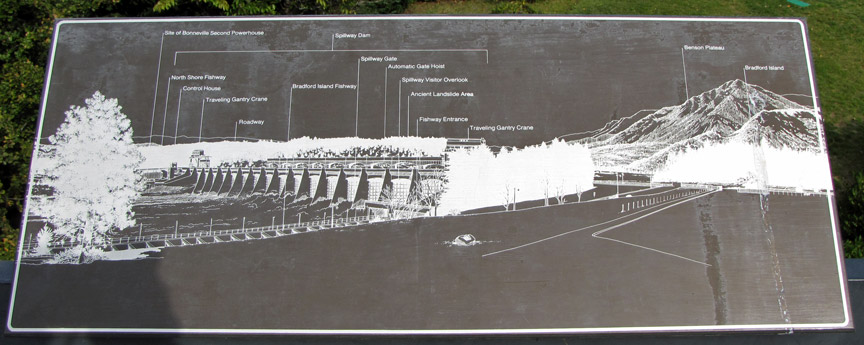
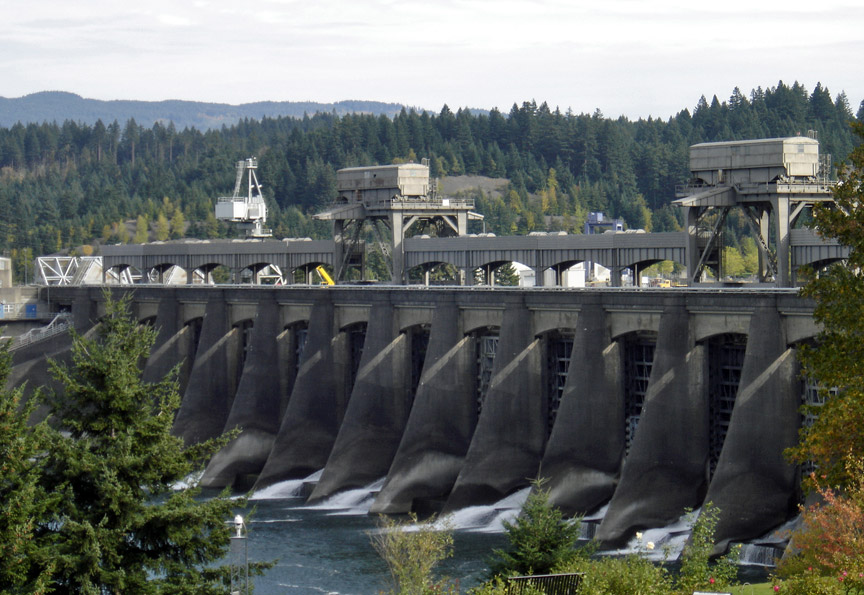
Bonneville Lock and Dam consists of several dam structures that together complete a span of the Columbia River between the U.S. states of Oregon and Washington at River Mile 146.1. The dam is located 40 miles (64 km) east of Portland, Oregon, in the Columbia River Gorge. The primary functions of Bonneville Lock and Dam are electrical power generation and river navigation. The dam was built and is managed by the United States Army Corps of Engineers. Electrical power generated at Bonneville is distributed by the Bonneville Power Administration. Bonneville Lock and Dam is named for Army Capt. Benjamin Bonneville, an early explorer credited with charting much of the Oregon Trail. The Bonneville Dam Historic District was designated a National Historic Landmark District in 1987.
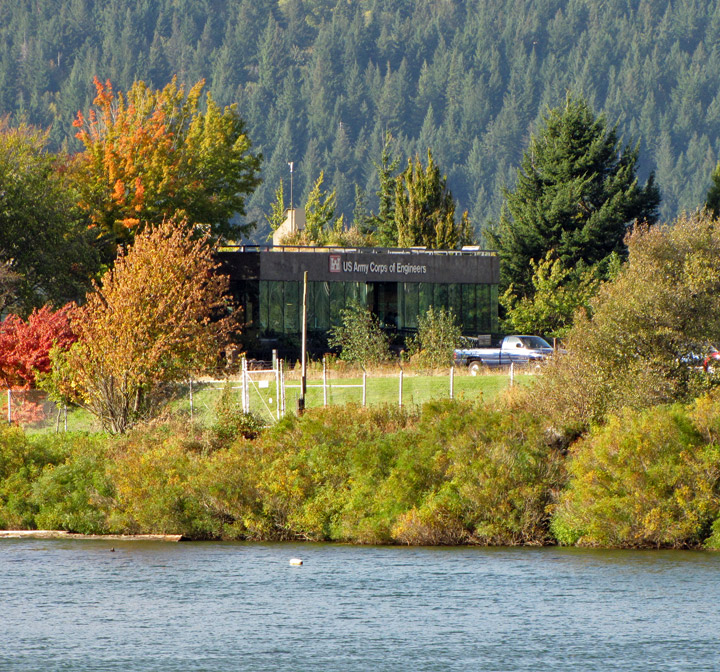
United States Army Corps of Engineers' Visitors Center
In 1896, prior to this damming of the river, the Cascade Locks and Canal were constructed, allowing ships to pass the Cascades Rapids, located several miles upstream of Bonneville.
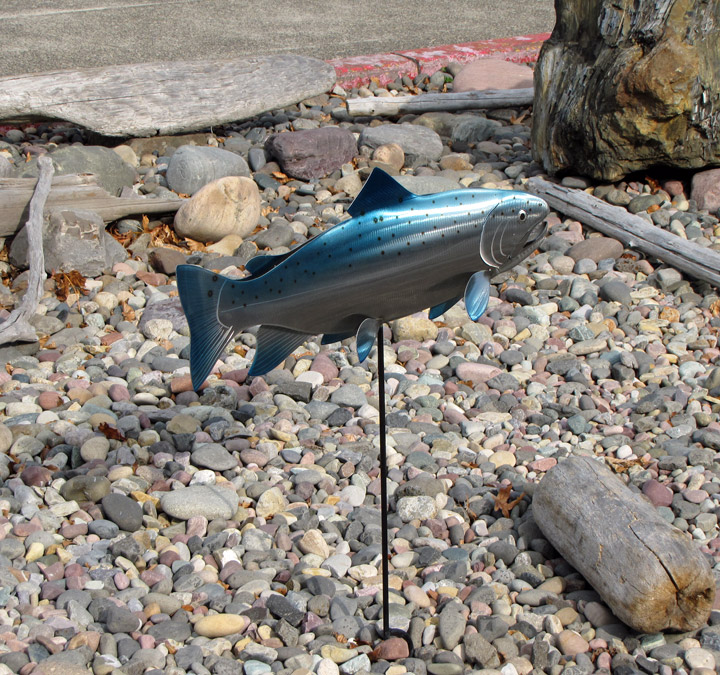

During the New Deal, the Army Corps of Engineers constructed a new lock and a
powerhouse which were on the south (Oregon) side of Bradford Island, and a
spillway on the north (Washington) side. These were started in 1934 and finished
in 1937.
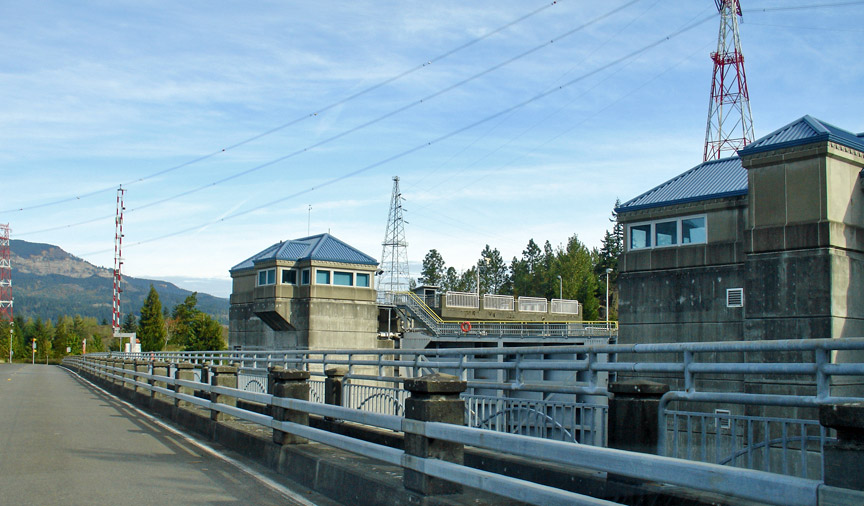
navigation lock at Bonneville
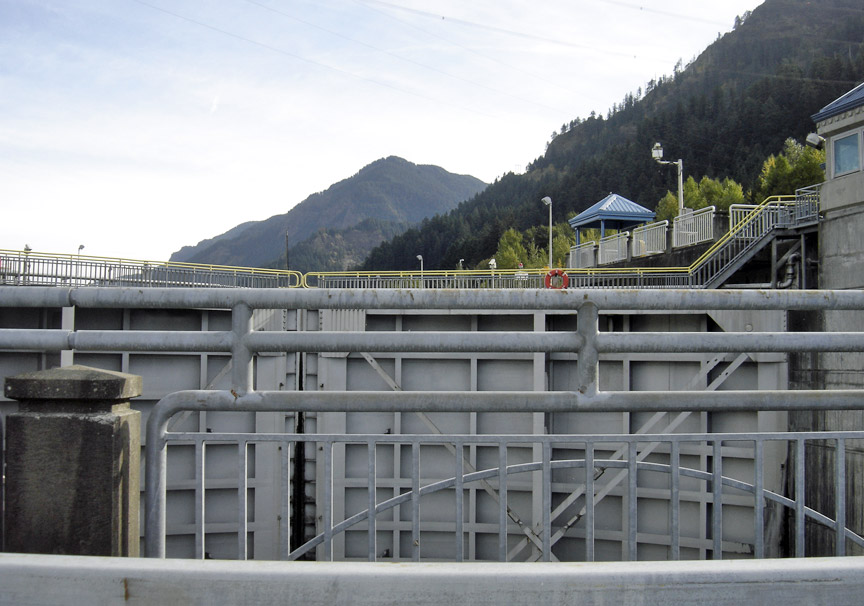
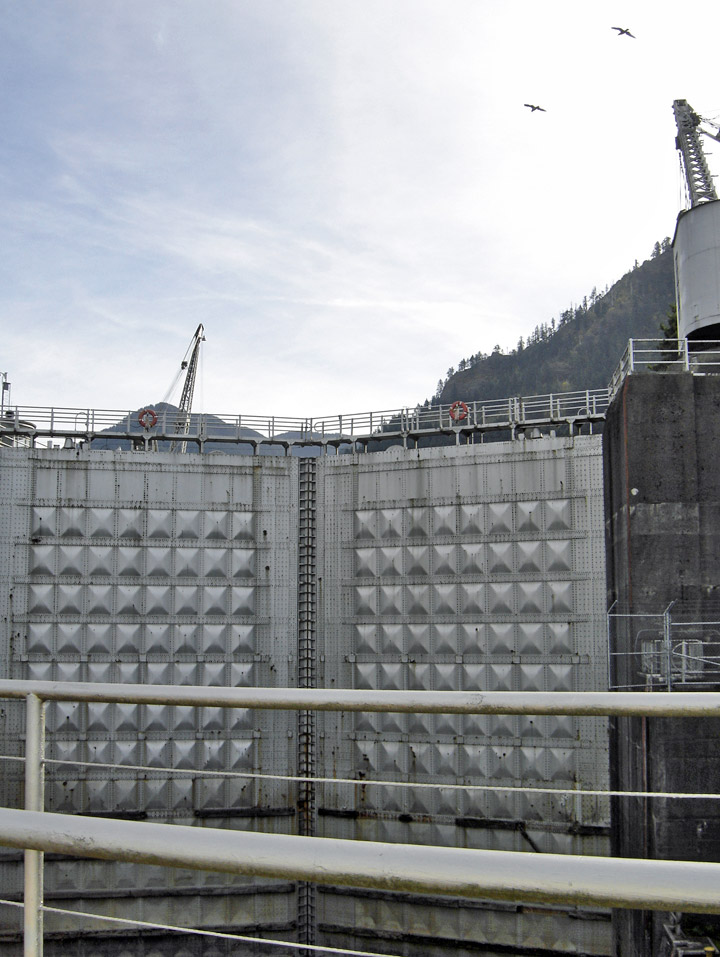
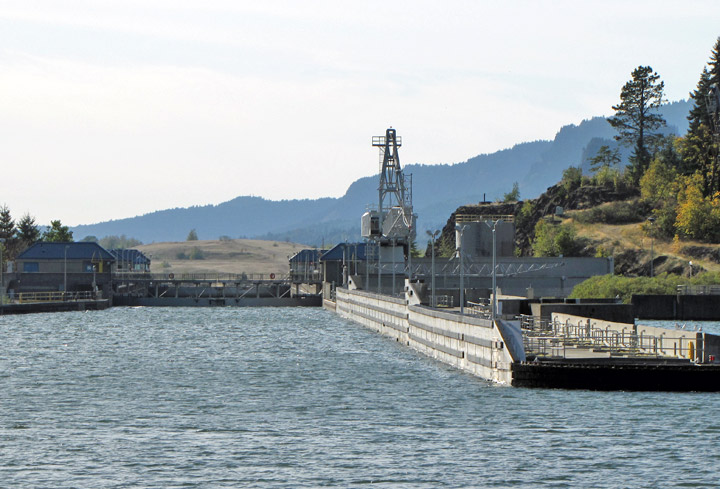
Both the cascades and the old lock structure were submerged by the Bonneville Reservoir, also known as Lake Bonneville, the reservoir that formed behind the dam. The original navigation lock at Bonneville was opened in 1938 and was, at that time, the largest single-lift lock in the world.
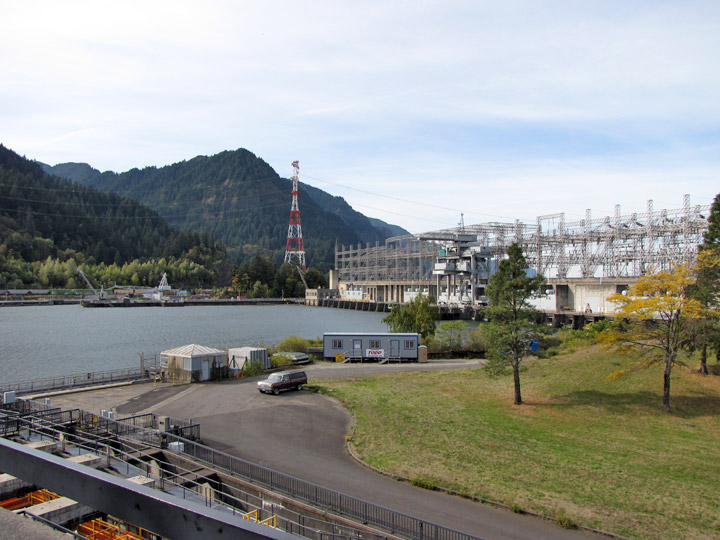
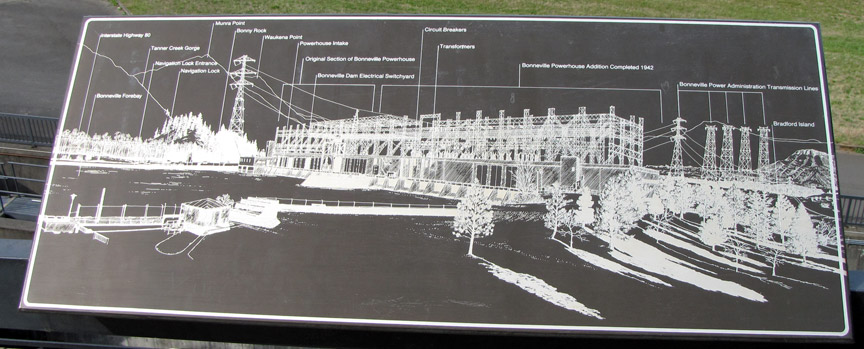
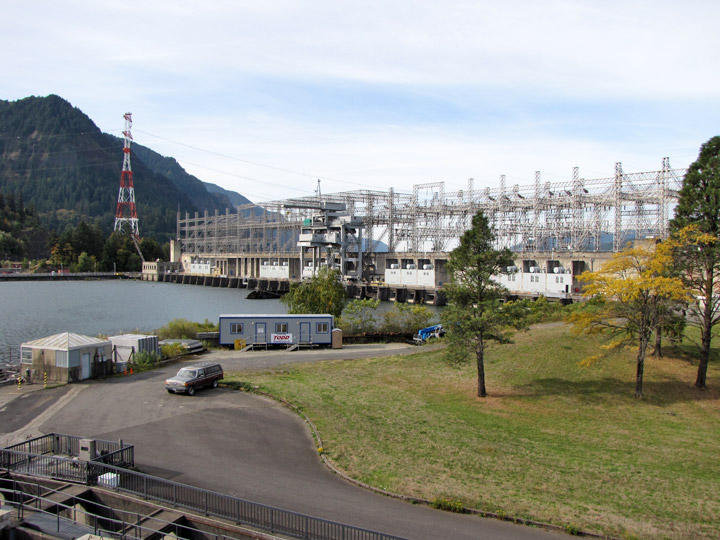
power house
In his song Roll on, Columbia, the folk singer, Woody Guthrie, spoke of
Bonneville as follows:
“ At Bonneville now there are ships in the locks
The waters have risen and cleared all the rocks,
Shiploads of plenty will steam past the docks,
So roll on, Columbia, roll on. ”
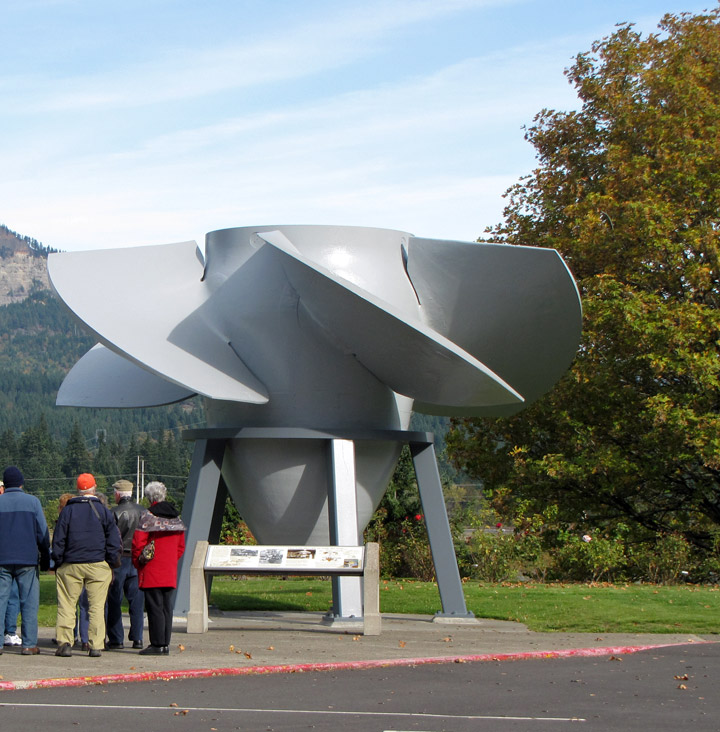
visitors next to the huge turbine wheel
At the time, America was in the Great Depression, and the dam's construction provided jobs and other economic benefits to the Pacific Northwest. Inexpensive hydroelectricity gave rise, in particular, to a strong aluminum industry.
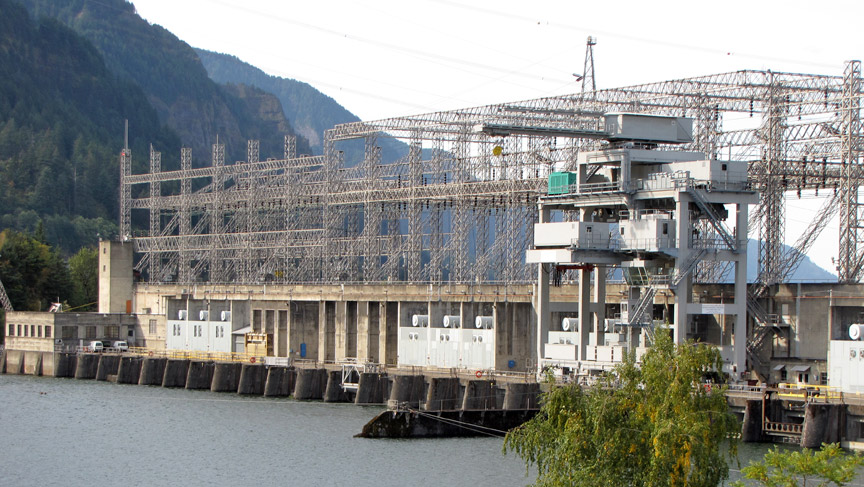
A second powerhouse (and dam structure) was started in 1974 and completed in
1981. The second powerhouse was built by widening the river channel on the
Washington side, creating Cascades Island between the new powerhouse and the
original spillway. The combined electrical output of the two power houses at
Bonneville is now over 1 million kilowatts.
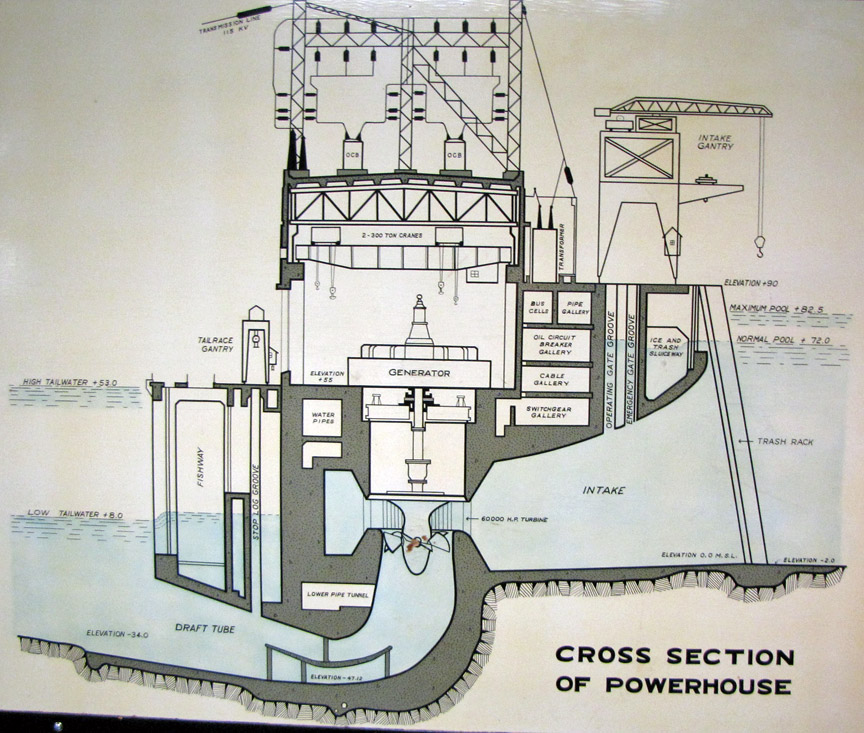
Cross Section of Powerhouse
Despite its world record size in 1938, Bonneville Lock became the smallest of
seven locks built subsequently at different locations upstream on the Columbia
and Snake Rivers; eventually a new lock was needed at Bonneville. This new
structure was built on the Oregon shore, opening to ship and barge traffic in
1993. The old lock is still present, but is no longer used.
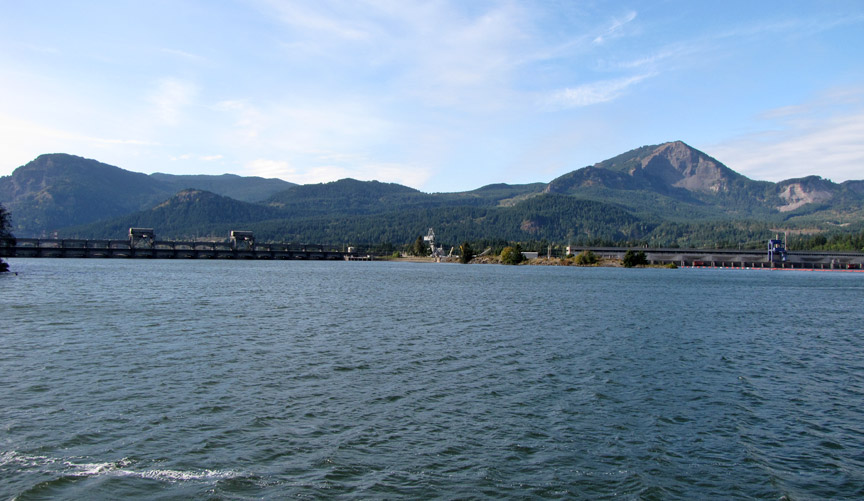
as seen from on the Columbia River
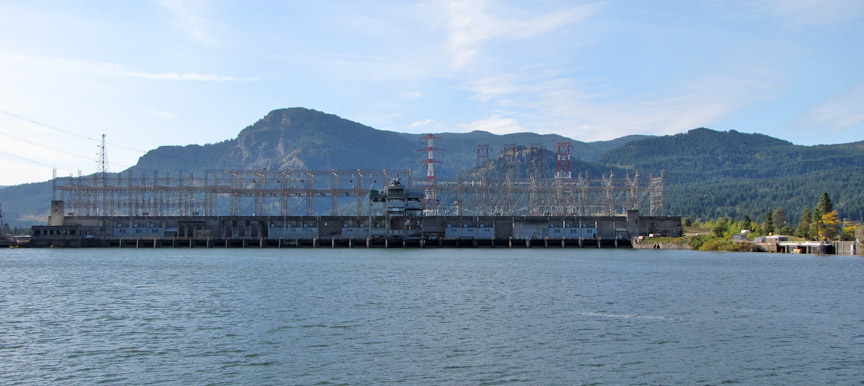
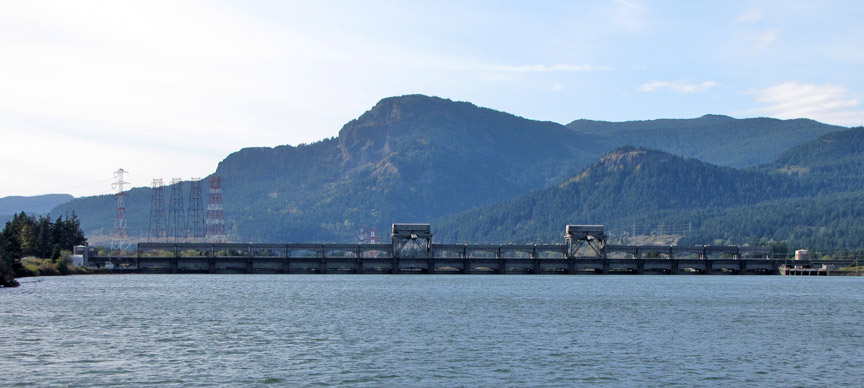
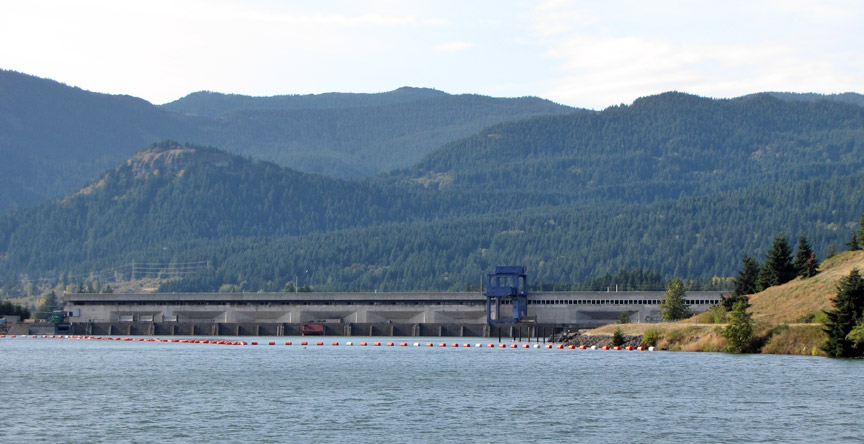
new power house
The dam features fish ladders to help native salmon and steelhead get past the dam on their journey upstream to spawn. The large concentrations of fish swimming upstream serves as a tourist attraction during the spawning season. California Sea Lions are also attracted to the large number of fish, and are often seen around the base of the dam during the spawning season. By 2006, the growing number of crafty sea lions and their impact on the salmon population have become worrisome to the Army Corps of Engineers and environmentalists. Historically, pinnipeds such as sea lions and seals hunted salmon in the Columbia River as far as The Dalles and Celilo Falls, 200 miles (320 km) from the sea, as remarked upon by people such as George Simpson in 1841.
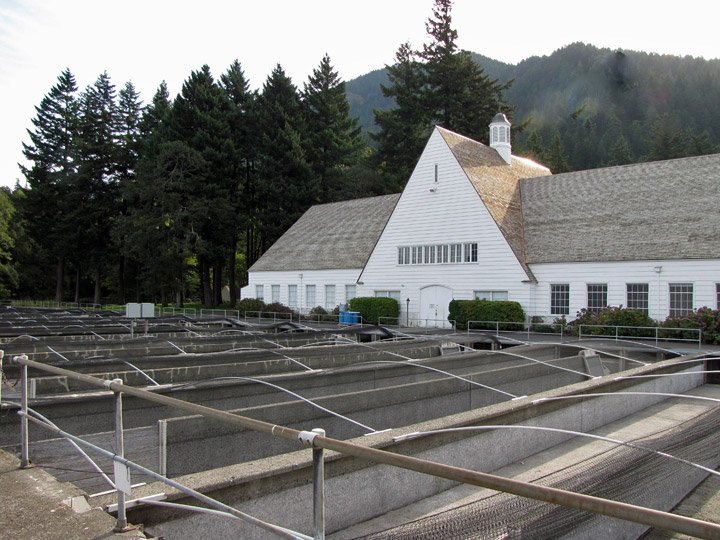
fish hatchery
The dam blocked the migration of white sturgeon to their upstream spawning areas. Sturgeon still spawn in the area below the dam and the lower Columbia River supports a healthy sturgeon population. Small very depressed populations of white sturgeon persist in the various reservoirs upstream.
Text from Wikipedia
Fish Ladder
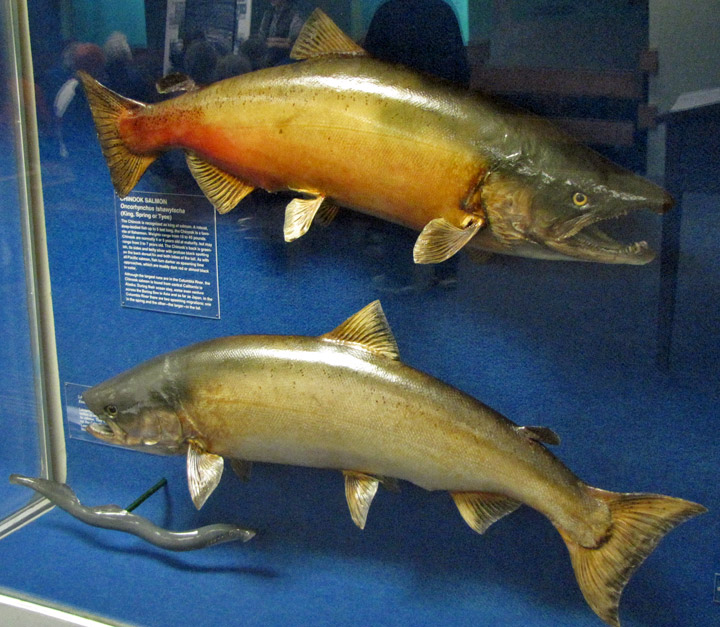
the Salmon
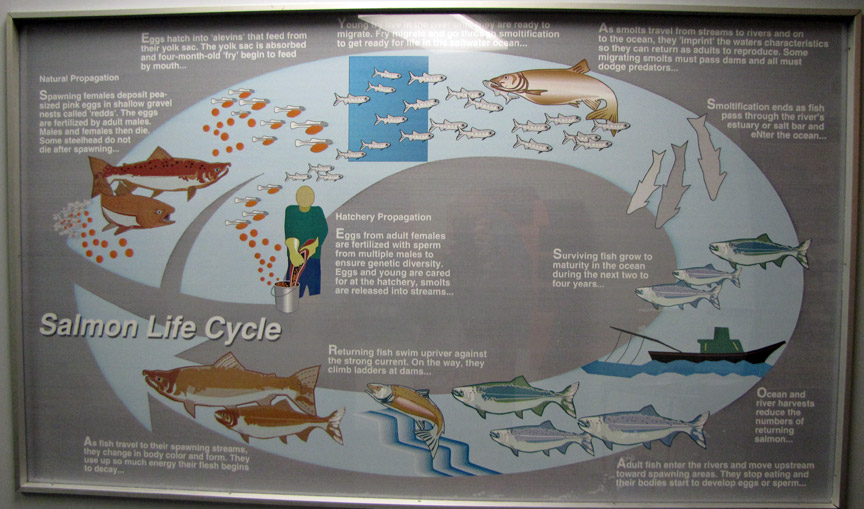
their life cycle
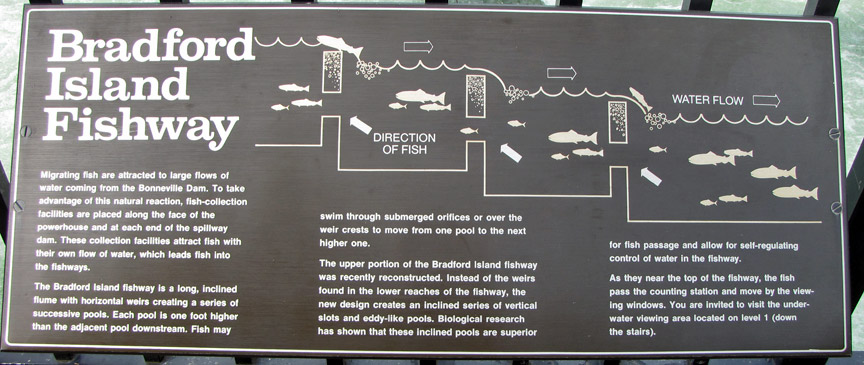
the fishway
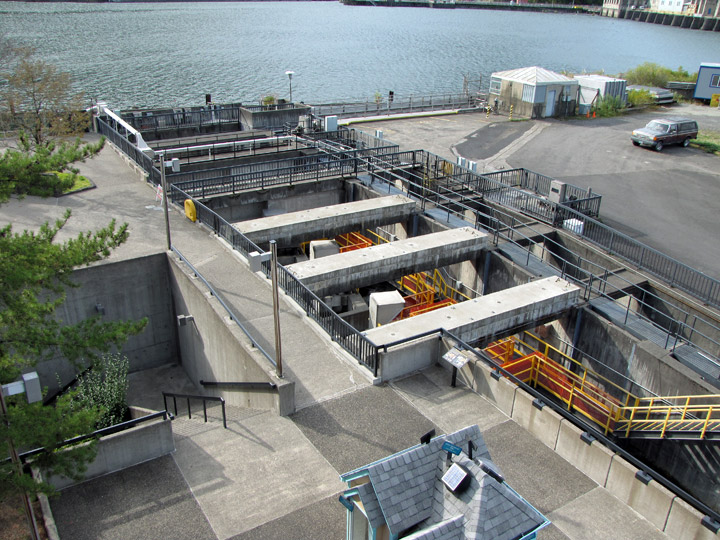
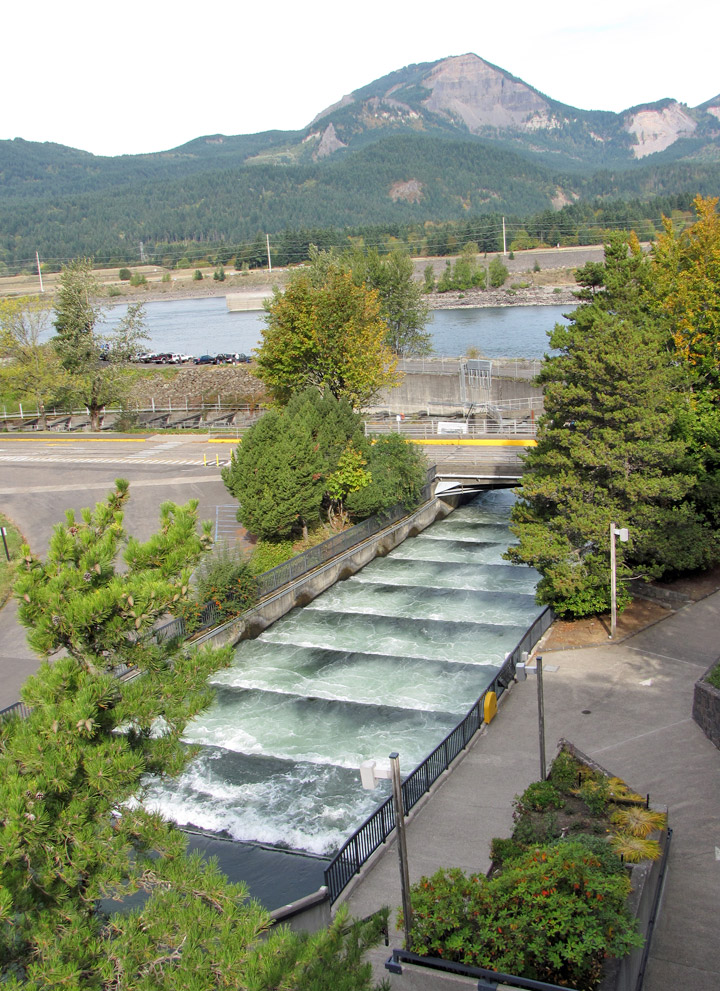
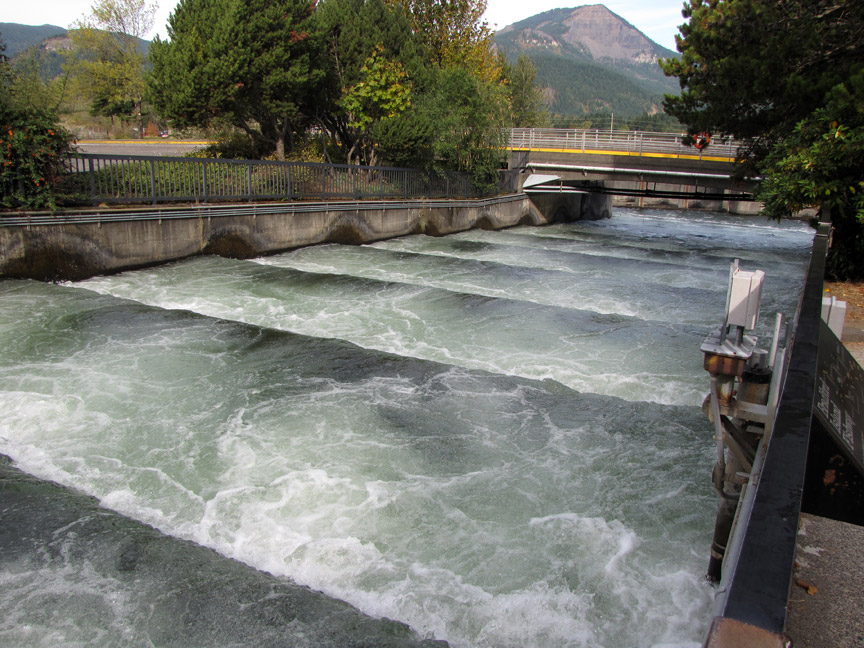
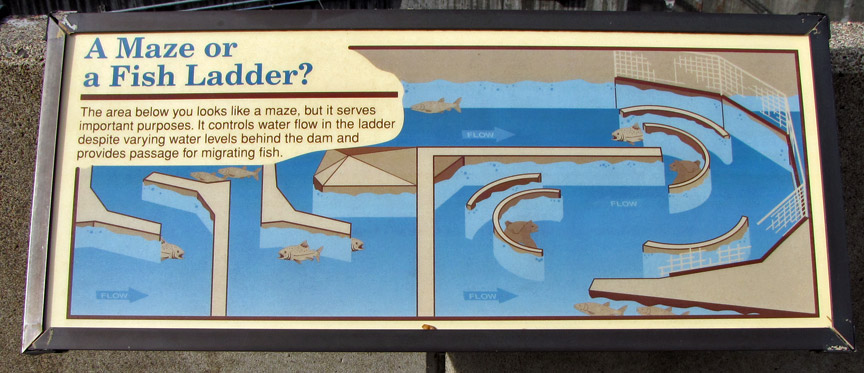
the maze path
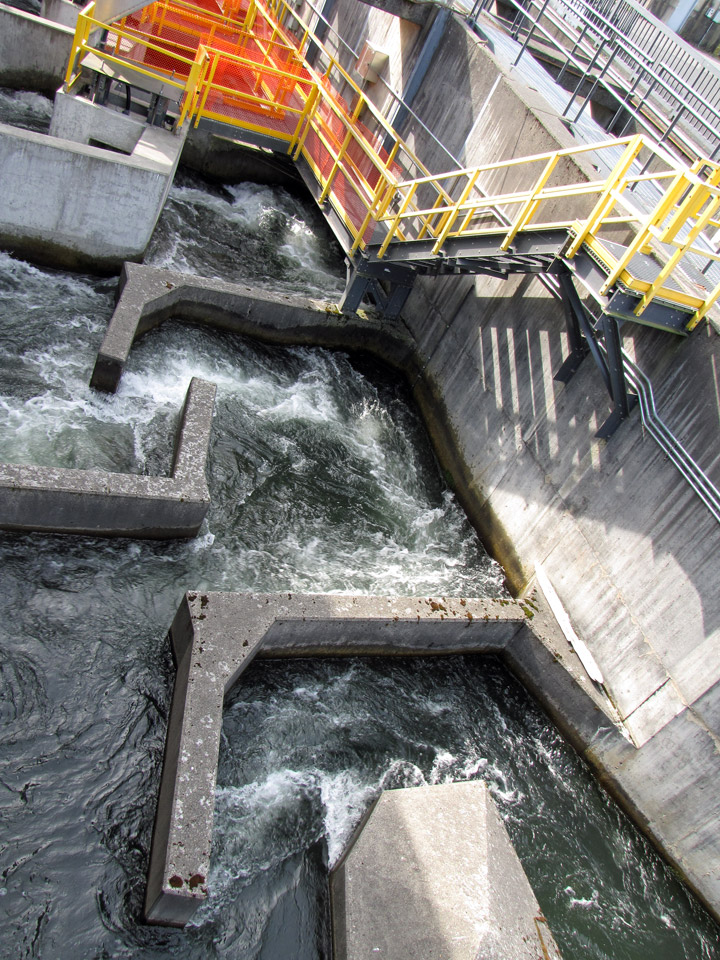
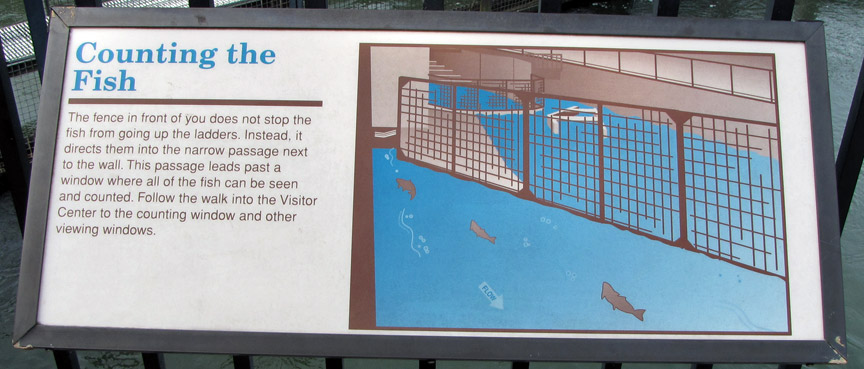
counting the fish
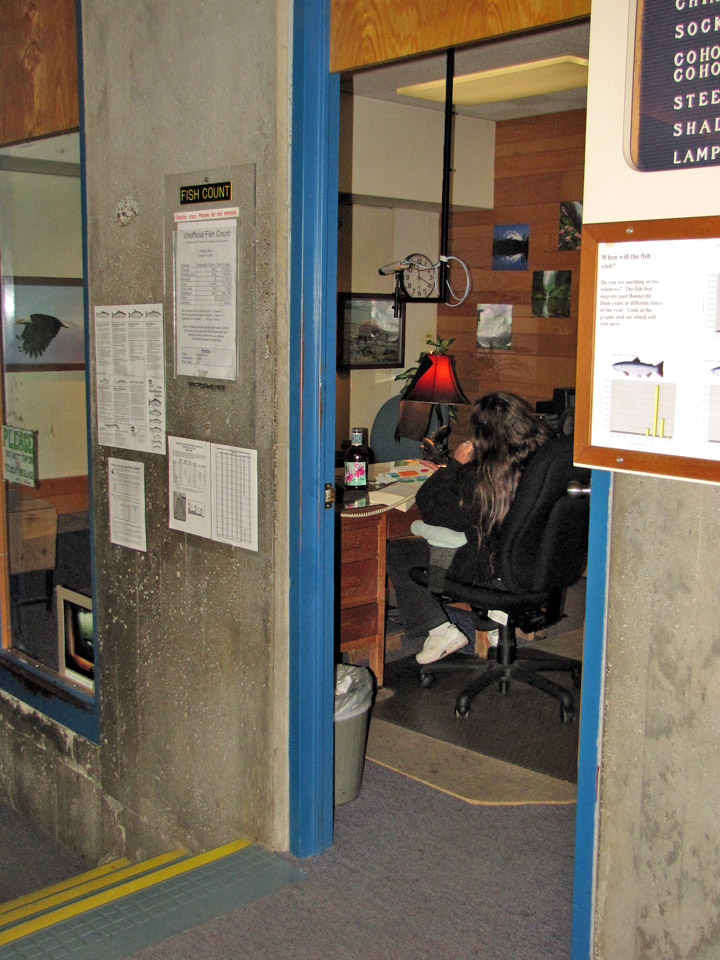
the counter
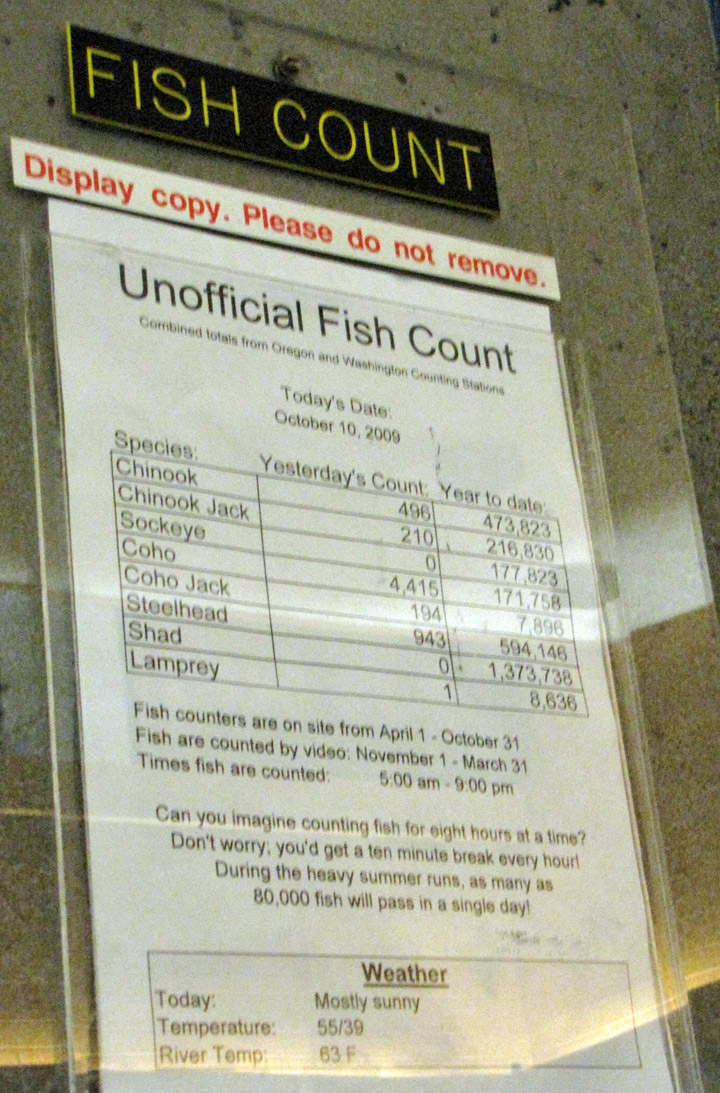
the daily score